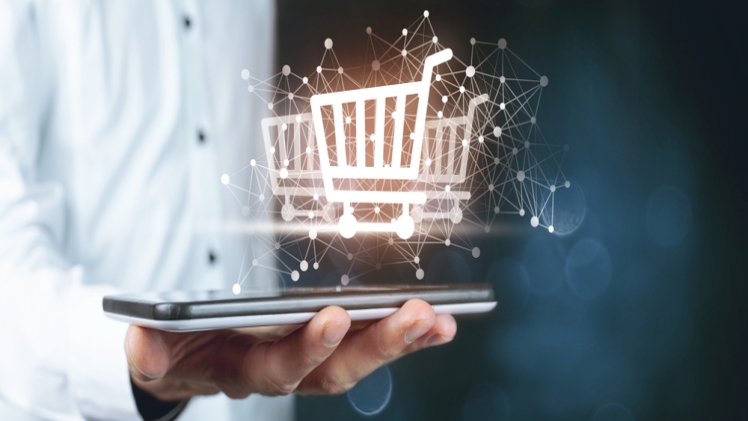As more and more businesses continue to pivot towards the online marketplace, it can be difficult to break away from the clutter and increase online sales if you’re an e-commerce business. If you are struggling to boost your e-commerce sales, follow these five simple steps to success:
1. Make Your Site Accessible
An inaccessible website is a site whose content is not easy to read or understand, or accessible, to users with disabilities. Believe it or not, one in four adults in the U.S. have a disability that makes browsing the web difficult.
To increase online sales, your website content must be available to blind users, deaf users, and those who use assistive technologies to read, write, and speak. Some simple and general changes that can be made to make your e-commerce site more accessible are as follows:
- Create captions for all images of products. Those who are visually impaired can use the text captions to understand what the product is.
- Identify the site’s language in the code. Users who need text readers can input the correct language to understand the site’s content.
- Create a consistent layout with the shop pages. They should be organized in a uniform manner so users can find exactly what products they are looking for.
- Avoid flashing images and pay attention to your color choices. This is a general web design rule, but it is especially important when considering those with ADHD or epilepsy.
Making these changes may seem simple, but completing all of them (and there are many more) can be tedious, so sometimes using a third-party tool is best and will ensure you don’t miss any opportunities. Solutions such as accessiBe can be implemented onto a business’s website to ensure it is accessible for all users. Their AI technology uses contextual understanding and computer vision to address the back-end requirements needed for screen reader and keyboard navigation adjustments. By improving a disabled users’ experience on your website, you will see an increase in user visits, time spent interacting on your site, and total purchases.
2. Paid Social Media
Paid social media is a marketing strategy where brands pay social platforms (Instagram, Facebook, Twitter, etc.) to place their posts on target audiences’ social feeds. To begin, you need to determine who your target audience is and then find where your target audience spends their time on social media. For example, if your target audience is Gen Z, marketing on Facebook will not be nearly as effective as Instagram. 65% of Gen Z checks Instagram on a daily basis, while only 34% do the same on Facebook. This means that you can reach a more significant amount of your audience by paying to post on Instagram. The more you pay, the more accounts you will be able to reach on any social media platform.
When creating advertisements on social media, make sure that the posts are visually appealing and are directly shoppable. All social media platforms now have the option for businesses to link their products on the actual social media post. So, if your business is selling t-shirts, you can post a picture of this product and link it. And when a user sees the post, they can click directly on the shirt and it will take them to your e-commerce site so they can complete the purchase.
3. Include Customer Testimonials and Focus on Reviews
When making purchase decisions, users want to know how others have felt about the purchase. According to a Nielsen study, 83% of customers trust customer recommendations; and 66% of consumers trust and rely on online product reviews. If you can incorporate customer reviews onto shopping pages on your site, users will trust your brand and will be more inclined to make a purchase. Learn more about how to foster reviews here.
4. Optimization and Personalization
When it comes to user experience on a website, visitors want a simple journey through their purchase. If there are too many pages to check out, too many forms to fill out, or pages are loading slowly, the likelihood that a user will no longer make the purchase is high. Currently, about 70% of users abandon their online cart. Some of the top reasons for abandonment are extra shipping costs, having to create an account, process is too long, total cost is not correct, delivery time is too slow, don’t trust websites with credit card info, and a bad return policy.
By making a few changes to your checkout process, users will have an easier time navigating through the sale process and make the actual purchase. The following changes are proven to make a difference in sales:
- Guest Checkout: Instead of having users make an account with your company, allow them to just fill out their shipping and billing information. This allows the checkout process to be faster and easier.
- Autofill Addresses: Having an autofill feature where a user’s address and billing info automatically pops-up makes users more likely to go through with the purchase.
- Social Sign-In: If a user can use one of their social media profiles to sign-up, this again avoids the process of having to fill out the forms. It speeds up the process and allows your business to gain access to their profile to market to them in the future.
- No pop-ups or buttons: Having buttons or features on the check-out page can distract a user and keep them from making a purchase.
- Multiple payment options: Allowing multiple credit cards and different online payment options will capture as many users as possible.
- Offer support contacts: Having an easy way to connect customers to a live-chat or a customer service line if they have questions during the check-out process can increase sales if their questions get answered in a timely fashion.
If you need a streamlined way to make this happen, consider harnessing AI to convert your shoppers into customers and create an easy checkout process. Third-party tools, like nowdialogue.com, can help. As you can see in the gif below, you essentially build the perfect messaging depending on the person who is shopping. As you know, different shoppers have different incentives to purchase different products (they are also located in different places, using different devices, and more). Through a solution like this, you can create the right message based on your customer, thus driving sales because you simplified the checkout process as well as the messaging that got them there. You will find out the best white chair covers for weddings.
5. Create a Sense of Urgency
Providing timely or specific discounts to users can increase sales. Posting a deal on your social media or in an email marketing campaign can drive more traffic to your website and boost sales. For example, if you are offering a Black Friday deal, letting your customers know that there is a time specific deal and if they want to take advantage of it, they have “X amount of time” to do so will generate more leads.
Another similar tactic is to send personalized advertisements or email discounts to users. People love to feel that they are getting an exclusive deal or that a discount is personal to them. By telling them that they can get “10% off if they shop in the next two days” will have more users logging on to shop.


